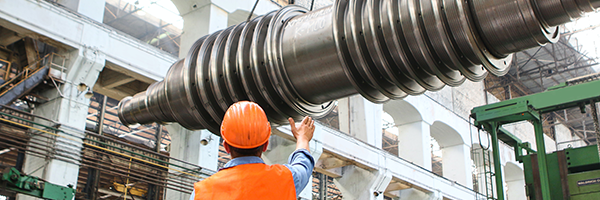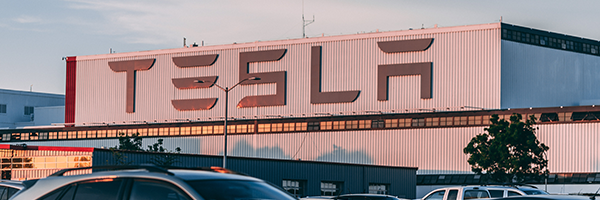 January 9, 2025
January 9, 2025
What You Need to Know Today:
Buon Natale from Venice
Do you know how to tell it’s Christmas here in Venice?

Next Friday’s big number for inflation, interest rates, and the Fed
At 8:30 a.m. on Friday, December 6, investors will see the U.S. jobs report for November. Economists expect that the economy added 200,000 jobs in the month and that for the unemployment rate will hold steady at 4.2%.

More evidence that the inflation rate is stuck
Yesterday, Wednesday, November 27, the report from the Bureau of Economic Analysis showed that the Personal Consumption Expenditures index, the Federal Reserve’s preferred inflation measure, had continued the stall that began in May.

Today I made Verizon Pick #6 in my Special Report: “3 Strategies and 10 Picks for Juicy Returns in a Yield Drought”
Today I made Verizon the sixth pick in my Special Report “3 Strategies and 1O Picks for a Yield Drought.” Here’s what I wrote.

25% tariffs for Mexico, China, and Canada: This won’t be the last time Trump talks tariffs
Yesterday in social media posts President-elect Donald Trump said that he would impose tariffs on his first day back in office, targeting the United States’ three largest trading partners, of 25% on all goods from Canada and Mexico until drugs and migrants stopped coming over the borders, and an additional 10% tariff on all products from China, saying that the country was shipping illegal drugs to the United States. (The Biden Administration had already imposed its own higher tariffs on China and, in additional, it had kept tariffs on China from the first Trump Administration in effect.)

Biden proposes/Trump disposes: Will GLP-1 diabetes/obesity drugs become free under Medicare and Medicaid?
The Biden administration has proposed making GLP-1 weight loss drugs free for low-income people and retirees who qualify as obese. Expensive drugs such as Ozempic, Wegovy and Zepbound, which cost $1,000 a month, would be covered for the 40% of the U.S. population who qualify as obese. Currently, the federal plans only cover the drugs when patients have other conditions caused by obesity, such as diabetes, heart disease. The leading drugs are made by Eli Lilly (LLY) and Novo Nordisk (NVO). Shares of Eli Lilly were up 4.55% today while Novo Nordisk rose 1.50%. The incoming Trump Administration will have to decide whether to move ahead with the plan. You can either think of this as a smart piece of health care policy or an effort to jam up an incoming administration that already faces challenges in devising coherent policy on healthcare. I go with the “jam ‘em up” theory myself.

Yesterday I made Broadcom Pick #3 in my Special Report on the 5 Next Big Things
I’d buy Broadcom even at this price as one of my three core AI stocks from the current generation of leaders. I’m adding it today to my long-term 50 Stocks Portfolio.
Live Market Report (20 minute delay)

A 50 basis point interest rate cut from the Fed in September? I don’t think so
Briefly on Monday’s scary stock market volatility, traders and investors decided that the Federal Reserve would make its first interest rate cut at its September 18 meeting not a “business-as-usual” 25 basis points but a “market emergency” 50 basis points. On the CME FedWatch tool the odds of a 50 basis point cut jumped to 85% from just 13.2% on July 30

Japan taketh away and Japan giveth–today’s rally in Tokyo wipes out most of yesterday’s loss
Today, Tuesday August 6, the Nikkei 225 index closed up 10.23% in Tokyo. That erased most of Mondyay’s 12% loss. And it led to the U.S. futures market opening higher and U.S. stock indexes moving up today. At the close in New York, the Standard & Poor’s 500 was ahead by 1.03%, and the Dow Jones Industrial Average was higher by 0.76%. The NASDAQ Composite had gained 1.03% and the small cap Russell 2000 had added 1.23%.The volatility eertainly isn’t over but today the market is following the usual patterns–with buying on the drop emerging after a big sell off–and that’s a big relief after the panic-inducing movement of the last three sessions. Those on Wall Street trying to figure out where we are in the unwinding of the yen/dollar carry trade that has lent so much intensity of the drop ay that the selling of dollar assets to buy ten isn’t over. Which makes sense.

Could the stock correction be all about Japan? And close to an end?
Okay, the correction in the NASDAQ and the near correction in the Standard & Poor’s 500 isn’t all about Japan. U.S. stock valuations are stretched. Air is coming out of the AI bubble. The U.S. economy is slowing But to me those factors don’t explain the stunning rapidity of this drop. Nor why the biggest damage to any global market is taking place in Tokyo. To me this event has all the hallmarks of a move that has more to do with the unwinding of massive speculative trades than with anything we might label “fundamentals” or “macro economics.”Edward Yardeni, president of Yardeni Research and one of the smartest long-time observers of the financial markets I follow, points his finger at Japan and the surprise interest rate increase from the Bank of Japan that has led to a rapid unwinding of the speculative dollar/yen carry trade.

Saturday Night Quarterback says (on aMonday morning), for the weeks ahead expect…
Yeah, I know you can read a calendar, but take a moment to think about how the extraordinary August economic news vacuum feeds into the current market plunge. No Federal Reserve meeting in August so no interest rate cut until September 18. Which also means no new economic projections from the Fed on GDP growth or the likelihood of recession. No Fed Speak at all, really, with reassurance that the economy is slowing but not headed for recession, until the August 22-24 central bank gab fest in Jackson Hole. No significant earnings news–big enough to affect sentiment at least–until Nvidia’s (NVDA) earnings on August 28.

Weak July jobs report, tick up in unemployment rate send stocks tumbling on recession fears
The U.S.economy added only 114,000 jobs in July. Economists surveyed by Bloomberg had projected an increase of 175,000 jobs in the month. The unemployment rate unexpectedly climbed by 0.2 percentage points to 4.3% in July, exceeding all 69 estimates by economists. Average hourly earnings rose 0.2% on a monthly basis, also less than forecast, and on an annual rate increased by 3.6%–the least since May 2021. The jump in the unemployment rate triggered the Sahm Rule. Coined by former Federal Reserve economist Claudia Sahm, the rule says that when the average jobless rate over three months is 0.5 percentage point above the 12-month low, a recession is coming. And that’s exactly where we are now. “We’re not headed in a good direction,” Sahm said on Bloomberg Radio Friday. It’s fair to say the stocks weren’t happy on Friday.

Stock indexes fall hard on data saying U.S. manufacturing contracted in July
The latest report on the ISM manufacturing index came in at 46.8 for July, lower than expected and down 1.7 points from the 48.5 recorded in June. (In this index ny reading below 50 indicates contraction in the sector.) That sign of contraction fueled fears that the Federal Reserve may have waited too long to cut interest rates–a rate cut seems to be in the cards for the central bank’s September meeting–and that the U.S. economy is in danger of slipping into recession. The stock market tumbled Thursday. The Dow Jones Industrial Average fell almost 500 points, or about 1.2%. The S&P 500 dropped about 75 points, or almost 1.4%, while the tech-heavy Nasdaq composite index was down more than 400 points, or about 2.3%. Money flowed into bonds: The 10-year Treasury yield fell below 4% for the first time since February.

September it is: today Fed signals September interest rate cut
At today’s meeting the Federal Reserve left its benchmark interest rate unchanged at 5.25% to 5.50%. Fed Chair Jerome Powell said an interest-rate cut could come as soon as September. “The question will be whether the totality of the data, the evolving outlook, and the balance of risks are consistent with rising confidence on inflation and maintaining a solid labor market,” Powell told reporters Wednesday. “If that test is met, a reduction in our policy rate could be on the table as soon as the next meeting in September.”

McDonald’s sales drop for first time in four years–this is what a McDonald’s economy looks like
I’ve started to call this The McDonald’s Economy–where the long-term effects of high inflation on prices damps consumer purchasing, but where the recent drop in inflation has limited companies’ “cover” for price increases. The result is that companies are seeing lower sales volumes at the same time as consumers push back ore strongly against price increases. McDonald’s isn’t the only company caught in this vise. Customer traffic at U.S. fast-food restaurants fell 2% in the first half of the year compared to the same period a year ago, according to Circana, a market research company. Circana expects high inflation and rising consumer debt will also dent traffic in the second half of 2024.

Saturday Night Quarterback says (on a Sunday), For the week ahead expect…
Earnings, earnings, earnings. From members of the Magnificent 7: Microsoft (MSFT), Amazon (AMZN), Meta Platforms (META) and Apple (AAPL). in the consumer sector from consumer stocks Starbucks (SBUX), McDonald’s (MCD), Mastercard (MA).From drug companies Pfizer (PFE), Moderna (MRNA) and Merck (MRK). And from Big Oil Chevron (CVX), ExxonMobil (XOM), Shell (SHEL), and BP (BP). Here’s what I’d watch for.

PCE inflation “tame” in June
The Personal Consumption Expenditures index, the Federal Reserve’s preferred measure of inflation, rose by just 0.% month-over-month in June, the Bureau of Economic Analysis reported this morning. The core personal consumption expenditures price index, which strips out volatile food and energy prices, increased 0.2% from May. The annual rate of core inflation was just 2.6%. Economists had projected a core annual rate of 2.5%. With the Fed set to meet on interest rates on July 31, inflation continues to move lower towards the central bank’s 2% target. These numbers support the Wall Street consensus calling for the Fed to begin cutting interest rates at its September 18 meeting.

Viking Therapeutics up 28% today as obesity drug moves to Phase III trials
Viking Therapeutic (VKTX) has announced that its subcutaneous obesity drug candidate VK2735 is moving into Phase III development. Viking is currently preparing for an end-of-Phase II meeting with the Food & Drug Administration later this year. Just as significant–maybe more?–pharmacokinetics data for VK2735 continues to show the potential for once-a-month dosing. The market-leading GLP diabetes/weight-loss drugs from Eli Lilly (LLY) and Novo Nordisk (NVO) require weekly injections. That dosing advantage gives VK2735 the potential to be the best-in-class obesity drug. (Viking is also at work on an oral version of the drug.)

U.S. economy grew at 2.8% annual rate in second quarter
The U.S. economy grew at a stronger than expected 2.8% annualized rate in the second quarter. The growth rate for the quarter that ended in June was double the 1.4% rate in the first quarter. Consumer spending and business investments drove almost all of the second quarter’s growth. But below the top line numbers I can see a slowdown in some fundamental trends from the first quarter.

Tesla’s got a margin problem–and I don’t see a quick fix
Shares of Tesla (TSLA) fell 12.3% Wednesday July 24, after the company delivered bad financial news in its second quarter earnings report. If you own Tesla or are thinking of buying the shares on this tumble, or indeed you own any stock in the current market, you need to understand the exact nature of Tesla’s troubles.

China cuts interest rates in a new attempt to jump start economy
On Monday, July 22, the People’s Bank of China lowered its benchmark lending rates and an important short-term policy rate.
The precise timing was a surprise although leaders at the recently concluded third plenum had flagged continuing problems in the real estate sector and soft consumer demand. This is a hugely important change in policy for the People’s Bank, which had recently shied away from cutting rates in an effort to prevent further erosion in the yuan versus the U.S. dollar, and to lower inflation caused by higher prices for imports. The move, I think, signals the hugh level of anxiety in the Beijing leadership at the economy’s refusal to respond to previous stimulus moves.

Too early to buy CrowdStrike on the dip–wait until just before the September 4 earnings report
Nothing like being at the center of the largest IT “event” in history to send a stock tumblling. Last week CrowdStrike (CRWD), one of the biggest makers of cybersecurity software, pushed out a flawed update that caused an error in the Microsoft Windows operating system that runs millions of computers at point of sales terminals and reservation systems at business such as Starbucks, at airports and airlines, and at banks and financial markets. The file “C-00000291*.sys,” was buried in an update for CrowdStrike’s Falcon sensor product and caused an error in Microsoft Windows operating system. Repairing the damage is expected to take months such much the work has to be done manually. Meanwhile CrowdStrikes shares are in free fall. The shares lost 11% on Friday and dropped another 13.5% today.

Saturday Night Quarterback says (on a Sunday), For the week ahead expect…
I expect technology sector weakness to continue with earnings worries still unanswered. What could put an end to selling in tech stocks? The NASDAQ 100 is down almost 4% in the last week. Certainly earnings news that showed earnings growth at the companies in this sector robust enough to justify paying a premium for these shares would be a big help Unfortunately, the coming week isn’t going to bring enough earnings good news among tech shares to make this case. Among big tech stocks only Tesla (TSLA) and Alphabet (GOOG) are scheduled to report.

Tech rout continues as U.S. explores further tightening restrictions on chip exports to China
Even good earnings news and guidance from Taiwan Semiconductor Manufacturing (TSM) couldn’t reverse the drop in tech stocks that accelerated yesterday, July 17, when the NASDAQ Composite recorded its worst day since 2022 with a 2.7% decline.

Has the Fed waited too long to lower rates?
With the first Federal Reserve interest rate cut likely at the central bank’s September 18 meeting, some current economic data raise the possibility that the economy is slowing more than the Fed–and Wall Street–would desire.

Another day of small-cap outperformance–here’s the best ETF for this trend
The small-cap Russell 2000 index gained 1.90% yesterday, July 15. That beat the 0.28% gain for the Standard & Poor’s 500. And the 0.53% gain for the Dow Jones Industrial Average. And a 0.27% gain for the NASDAQ 100 index.And today, as of noon, New York time, the Russell 2000 is up another 2.25% versus a gain of just 0.30% for the S&P 500 and 1.21 for the Dow Industrials.The NASDAQ 100 is off o.20% All his continues the outperformance trend of last week that I wrote about in yesterday’s Saturday Night Quarterback post.

Saturday Night Quarterback says (on a Sunday), For the week ahead watch…
.Watch to see if we finally get that long-awaited, long-predicted, and never quite arriving rotation out of technology stocks (and especially those BIG tech stocks) and into smaller capitalization stocks, or consumer stocks or value stocks.



